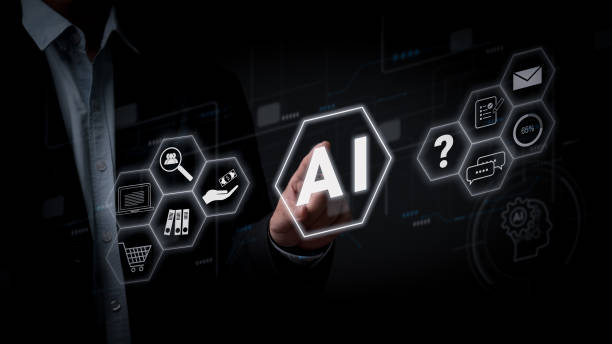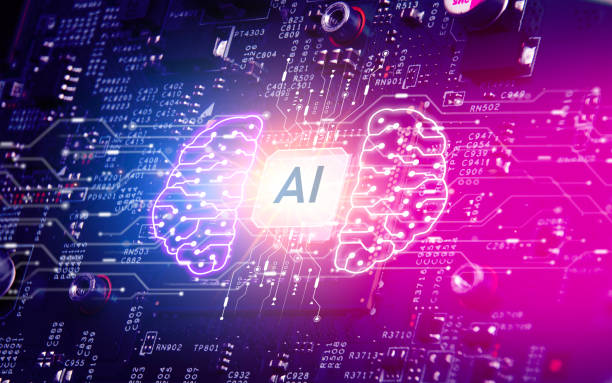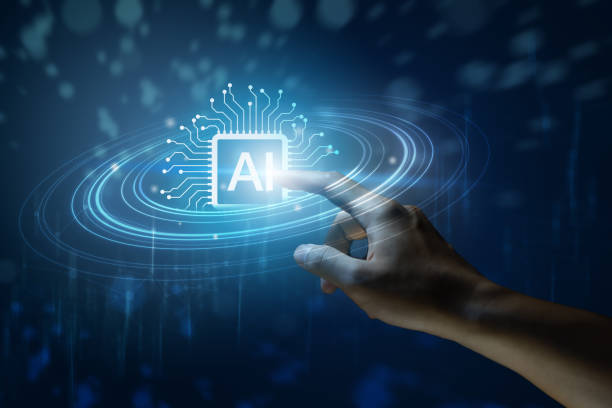What is an Artificial Intelligence Robot? Definition, History, and Applications

An Artificial Intelligence Robot is an intelligent system that, using algorithms and #machine_learning techniques, is capable of performing tasks that typically require human intelligence.
These tasks include understanding natural language, pattern recognition, decision-making, and problem-solving.
The history of Artificial Intelligence Robots dates back to previous decades, but recent advances in #natural_language_processing and #deep_learning have provided new possibilities for the development of these robots.
Artificial intelligence robots have applications in various fields such as customer service, industrial automation, medicine, finance, and even computer games.
An Artificial Intelligence Robot tries to mimic human cognitive behaviors and functions.
This includes capabilities such as reasoning, planning, learning, and problem-solving.
By using collected data and complex algorithms, an Artificial Intelligence Robot is able to make automatic decisions and improve its performance.
These capabilities make the Artificial Intelligence Robot a useful and effective tool in many industries and fields. For more information on artificial intelligence, you can visit the Wikipedia page.
Using an Artificial Intelligence Robot not only helps increase efficiency and reduce costs, but also makes it possible to provide better and more accurate services.
For example, in customer service, an Artificial Intelligence Robot can answer customer questions and solve their problems 24 hours a day.
In medicine, these robots can help diagnose diseases and provide personalized treatments.
In short, an Artificial Intelligence Robot is a powerful technology that is changing the world around us.
Does your current online store design cause you to lose customers and sales?
Rasaweb is your solution with modern and user-friendly online store designs!
✅ Significant increase in conversion rates and sales
✅ Creating strong branding and gaining customer trust
⚡ Get a free online store design consultation from Rasaweb!
Main Components of an Artificial Intelligence Robot: Examining Structure and Function
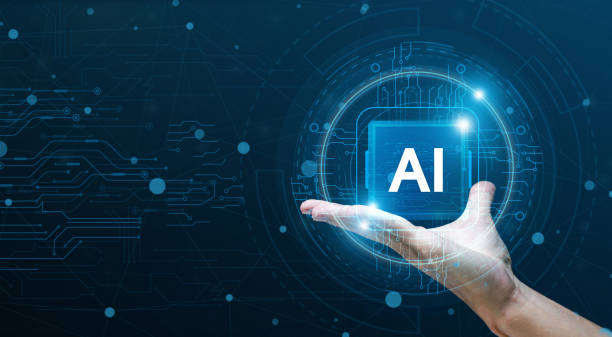
An Artificial Intelligence Robot consists of several main components, each of which plays an important role in its overall performance.
These components include sensors, processors, algorithms, and actuators.
Sensors collect environmental information and allow the robot to be aware of its surroundings.
This information is then analyzed by processors, and artificial intelligence algorithms use this data to make decisions.
Finally, the actuators execute the processed commands and enable the robot to perform the desired action.
Machine learning algorithms play a key role in the performance of an Artificial Intelligence Robot.
These algorithms allow the robot to learn from new data and improve its performance.
For example, artificial neural network algorithms can identify complex patterns in data and make decisions based on them.
These capabilities allow an Artificial Intelligence Robot to automatically adapt to environmental changes and have optimal performance.
In addition, the user interface is an important part of an Artificial Intelligence Robot.
The user interface allows users to interact with the robot and transfer their commands to it.
This interface can include a screen, keyboard, microphone, or even a mobile application.
Designing an efficient and user-friendly user interface can improve the user experience and make it easier to use the Artificial Intelligence Robot.
Types of Artificial Intelligence Robots: From Chatbots to Industrial Robots
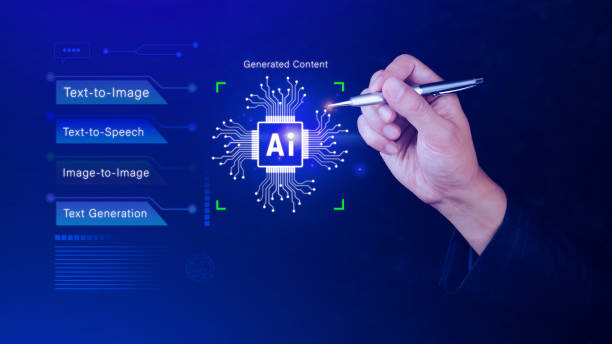
There are different types of artificial intelligence robots, each designed for specific applications.
One of the most common types of artificial intelligence robots is chatbots, which are used to answer customer questions and provide online support services.
These robots can be available 24 hours a day and respond to a large number of customers simultaneously.
Another type of artificial intelligence robot is industrial robots, which are used to automate production processes and perform repetitive and dangerous tasks in factories.
Artificial intelligence robots also have many applications in the field of medicine.
These robots can assist surgeons in performing complex operations, deliver medications to patients, and even help diagnose diseases.
Rescue robots are another type of artificial intelligence robot used to search for and rescue people in emergency situations such as earthquakes and fires.
These robots can access areas that are dangerous or inaccessible to humans.
In addition, home robots are becoming increasingly popular.
These robots can help with daily tasks such as cleaning the house, taking care of children and the elderly.
With advances in technology, artificial intelligence robots are expected to play an increasingly important role in our daily lives in the future.
Here is a simple table to show the categories of robots:
| Robot Type | Applications | Examples |
|---|---|---|
| Chatbot | Customer service, online support | Responsive robots on websites |
| Industrial Robot | Production automation, repetitive tasks | Welding and assembly robots |
| Medical Robot | Surgery, drug delivery, disease diagnosis | Da Vinci surgical robots |
| Rescue Robot | Search and rescue in emergency situations | Search robots in earthquakes |
| Home Robot | Cleaning, caring for children and the elderly | Vacuum cleaner robots |
Advantages and Disadvantages of Using an Artificial Intelligence Robot: Opportunities and Challenges

Using artificial intelligence robots has its own advantages and disadvantages.
One of the biggest advantages of using an artificial intelligence robot is increased efficiency and reduced costs.
These robots can work 24 hours a day without needing rest and perform repetitive and time-consuming tasks quickly and accurately.
In addition, artificial intelligence robots can reduce human errors and improve the quality of products and services.
On the other hand, using artificial intelligence robots also has challenges.
One of the most important challenges is the high cost of developing and implementing these robots.
In addition, artificial intelligence robots may cause job losses, as many of the tasks previously performed by humans are now performed by robots.
There are also concerns about privacy and data security, as artificial intelligence robots have access to large amounts of data and this data may be misused.
Despite these challenges, there are many opportunities to use artificial intelligence robots.
These robots can help solve complex problems, improve the quality of human life, and lead to the development of new industries.
To take full advantage of these opportunities, policymakers and industrialists must work together to provide solutions to manage challenges and reduce potential risks.
Does your company website create a professional and lasting first impression on potential customers? Rasaweb, with its professional corporate website design, not only represents the credibility of your brand, but also paves the way for the growth of your business.
✅ Create a powerful and reliable brand image
✅ Attract target customers and increase sales
⚡ Get a free consultation
How an Artificial Intelligence Robot is Made: Design and Development Steps
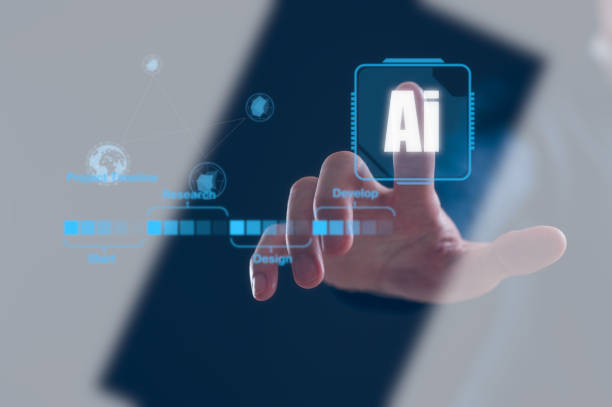
Building an artificial intelligence robot is a complex and multi-step process that requires knowledge and expertise in various fields including #programming, #machine_learning and #robotics.
The first step in this process is to define the purpose and application of the robot.
It must be specified what tasks the robot is to perform and what problems it is to solve.
After defining the purpose, the design phase begins.
At this stage, the physical structure of the robot, sensors, actuators and required software are designed.
After designing, the development phase begins.
At this stage, the software needed to control the robot and implement artificial intelligence algorithms are written.
For this, various programming languages such as Python, C ++ and Java are used.
After the software development is completed, the testing and evaluation phase begins.
At this stage, the robot’s performance is tested in various conditions and possible defects are fixed.
Finally, after ensuring that the robot is working correctly, the deployment phase begins.
At this stage, the robot is deployed in a real environment and starts performing its tasks.
It should be noted that the process of building an artificial intelligence robot is an iterative process and may require continuous review and improvement.
In order to facilitate the development process, various tools and frameworks such as TensorFlow, PyTorch and ROS are used.
These tools help developers to quickly and easily implement artificial intelligence algorithms and develop smart robots.
The Role of Data in Artificial Intelligence Robots: Collection, Processing, and Analysis
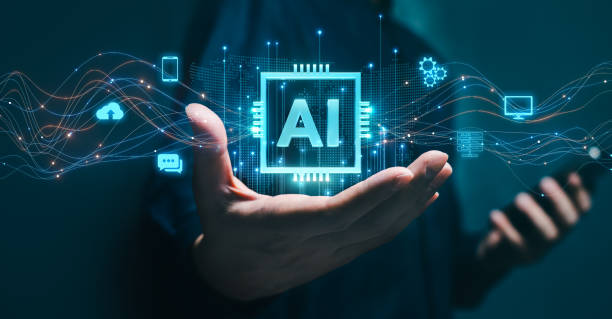
Data plays a very important role in the performance of artificial intelligence robots.
An artificial intelligence robot needs a lot of data to learn and improve its performance.
This data can include images, sounds, texts, or any other type of data that helps the robot to identify patterns and relationships in the environment.
The process of collecting, processing, and analyzing data is essential for an artificial intelligence robot.
Data collection can be done through various sensors installed on the robot.
These sensors collect environmental information and allow the robot to be aware of its surroundings.
After data collection, the processing phase begins.
At this stage, the data is cleaned, formatted, and prepared for analysis.
Machine learning algorithms are trained using this data and the robot is able to identify patterns and relationships in the data.
Data analysis helps the robot make better decisions and improve its performance.
For example, an artificial intelligence robot designed for facial recognition can identify different faces and distinguish people from each other using training data.
In general, data is the fuel of artificial intelligence robots and without sufficient data, these robots will not be able to perform their tasks.
The Future of Artificial Intelligence Robots: Predictions and Perspectives

The future of artificial intelligence robots is very bright and full of new opportunities.
With advances in technology, artificial intelligence robots are expected to play an increasingly important role in our daily lives in the future.
These robots are predicted to create major changes in various fields such as health care, education, transportation, and industry.
For example, in health care, artificial intelligence robots can help diagnose diseases, provide personalized treatments, and care for patients.
In education, artificial intelligence robots can help teachers provide interactive and personalized training and allow students to learn at their own pace.
In transportation, artificial intelligence robots can help develop self-driving cars and intelligent transportation systems that lead to reduced accidents and improved transportation efficiency.
In industry, artificial intelligence robots can help automate production processes, improve product quality, and reduce costs.
Predictions show that artificial intelligence robots will have significant effects in various industries, and a table of these effects is presented below:
| Industry | Predicted Effects |
|---|---|
| Health Care | Faster disease diagnosis, personalized treatments, reduced medical errors |
| Education | Interactive education, personalized learning, reduced educational costs |
| Transportation | Self-driving cars, reduced accidents, improved transportation efficiency |
| Industry | Process automation, improved product quality, reduced costs |
However, to achieve these prospects, it is necessary to seriously consider the existing challenges such as ethical, security, and social issues and provide solutions to manage these challenges.
Ethical Issues in Artificial Intelligence Robot Development: Privacy and Security

The development of artificial intelligence robots is accompanied by important ethical issues that need to be given special attention.
One of the most important ethical issues is protecting privacy and data security.
Artificial intelligence robots have access to large amounts of data and this data may be misused.
For example, people’s personal information can be collected and used without their knowledge.
To prevent this from happening, strict laws and regulations must be put in place regarding the collection and use of data.
Another issue that needs to be addressed is the accountability of artificial intelligence robots.
If an artificial intelligence robot makes a mistake and causes damage, who will be responsible for this damage? Is the robot’s manufacturer, the robot’s user, or the robot itself responsible? These questions require careful discussion and review and solutions must be provided to determine the accountability of robots.
In addition, there are concerns about discrimination and inequality.
If artificial intelligence algorithms are trained based on discriminatory data, robots may make discriminatory decisions.
For example, an artificial intelligence robot designed for hiring may unconsciously discriminate against people based on gender, race, or ethnicity.
To prevent this from happening, artificial intelligence algorithms must be carefully reviewed and ensure that there is no discrimination in them.
Are you lagging behind in competition with large online stores?
Rasaweb will put your business online and increase your market share with professional online store design!
✅ Increase brand credibility and customer trust
✅ Easy shopping experience leads to more sales
⚡ Act now to receive a free website design consultation!
Most Popular Artificial Intelligence Robots in the World in 2024
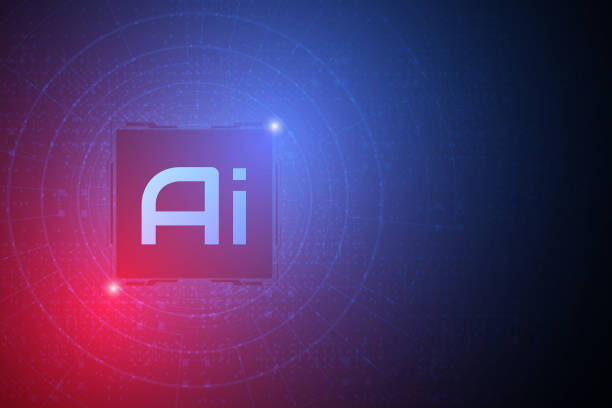
In 2024, several artificial intelligence robots have become highly popular due to their capabilities and wide applications.
These robots include advanced chat bots such as #ChatGPT, #Bard and #Claude, which have been very successful in answering questions, producing content and providing online support services.
Using large language models (LLMs), these robots are able to understand and produce complex texts and can communicate with users naturally and fluently.
In the field of industrial robotics, robots from Boston Dynamics such as Spot and Atlas have attracted attention due to their advanced movement capabilities and ability to perform complex tasks in difficult environments.
These robots can be used in areas such as inspection, monitoring, and material transportation.
Also, medical robots such as Da Vinci Surgical System help surgeons to perform complex operations with greater precision and reduce the amount of invasion.
In the field of customer service, artificial intelligence robots such as Amelia and Kore.ai help companies to provide better support services and increase customer satisfaction.
These robots can answer customer questions 24 hours a day, solve their problems, and even advise them.
In general, the popularity of artificial intelligence robots in 2024 indicates significant advances in this field and the increasing applications of them in various industries.
Artificial intelligence robots are currently at the center of attention.
Challenges Facing the Development of Artificial Intelligence Robots: Solutions and Suggestions

The development of artificial intelligence robots faces numerous challenges that require appropriate solutions and suggestions to overcome them.
One of the most important challenges is the lack of sufficient and quality training data.
Artificial intelligence robots need a large amount of data to learn and improve their performance, but collecting and preparing this data can be very time-consuming and costly.
To solve this problem, data augmentation and transfer learning techniques can be used, which allow robots to perform better using less data.
Another challenge that needs to be addressed is the complexity of artificial intelligence algorithms.
Many artificial intelligence algorithms are very complex and understanding and implementing them requires high knowledge and expertise.
To solve this problem, artificial intelligence development tools and frameworks can be used, which help developers to quickly and easily implement artificial intelligence algorithms.
In addition, training and educating specialized human resources in the field of artificial intelligence is also very important.
Ethical and legal issues are also important challenges in the development of artificial intelligence robots.
For example, the issue of robot accountability, protecting privacy and data security, and preventing discrimination in artificial intelligence algorithms require special attention and providing appropriate legal and ethical solutions.
To solve these challenges, policymakers, industrialists, and researchers must work together to enact laws and regulations that ensure the responsible and ethical development of artificial intelligence robots.
Frequently Asked Questions
| Question | Answer |
|---|---|
| What is an artificial intelligence robot? | It is a robot that uses artificial intelligence capabilities to understand the environment, reason, learn, and make decisions to perform complex tasks independently. |
| What is the main difference between a regular robot and an artificial intelligence robot? | Artificial intelligence robots can learn and adapt to their environment, while regular robots usually operate based on fixed and predetermined plans. |
| What fields do artificial intelligence robots apply to? | In fields such as industry (production lines), medicine (robotic surgeries), services (customer support, smart vacuum cleaners), exploration (space and underwater) and entertainment. |
| How do artificial intelligence robots learn? | They acquire new skills through machine learning algorithms and deep learning, by analyzing big data and identifying patterns. |
| Can artificial intelligence robots have emotions? | Currently, no. They can identify or simulate emotions, but they do not have the real experience of emotions like humans. |
| What are the most important advantages of using artificial intelligence robots? | Increased productivity, reduced human error, performing dangerous or repetitive tasks, and providing innovative and efficient services. |
| What are the challenges in developing artificial intelligence robots? | The need for abundant and quality data, the complexity of algorithms, ethical issues, cyber security, and the high cost of research and development. |
| Are artificial intelligence robots dangerous to humans? | By following safe design principles and ethical regulations, no. Concerns are more about social and economic impacts such as changes in the labor market. |
| What is an example of an artificial intelligence robot in everyday life? | Smart vacuum cleaner robots (such as Roomba) that automatically map and clean the house, or smart voice assistants (such as Siri and Alexa). |
| How is the future of artificial intelligence robots predicted? | They are expected to become smarter, more autonomous, and capable of more complex interaction with humans, and play a more prominent role in industry, medicine, transportation, and everyday life. |
And other services of Rasa Web Advertising Agency in the field of advertising
Smart Marketplace: A combination of creativity and technology to increase click-through rate by intelligent data analysis.
Smart Advertising Campaign: A creative platform to improve online growth using real data.
Smart Marketplace: Transform customer behavior analysis with the help of marketing automation.
Smart Reportage: An effective tool for online growth with the help of intelligent data analysis.
Smart Digital Branding: A combination of creativity and technology to increase website visits by using real data.
And more than hundreds of other services in the field of internet advertising, advertising consulting and organizational solutions
Internet Advertising | Advertising Strategy | Reportage Ad
Sources
Artificial Intelligence: Introduction and Applications (Part 1)
, How Do Smart Robots Change Our Lives?
, What is Artificial Intelligence? All About AI
, What is Artificial Intelligence and What Are Its Applications?
? Are you ready to transform your business in the digital space? Rasaweb Afarin Digital Marketing Agency, with its comprehensive services including Modern UI Website Design and SEO optimization, accompanies you on the path to achieving online success.
📍 Tehran, Mirdamad Street, next to the Central Bank, South Kazerun Alley, Ramin Alley No. 6
“`

